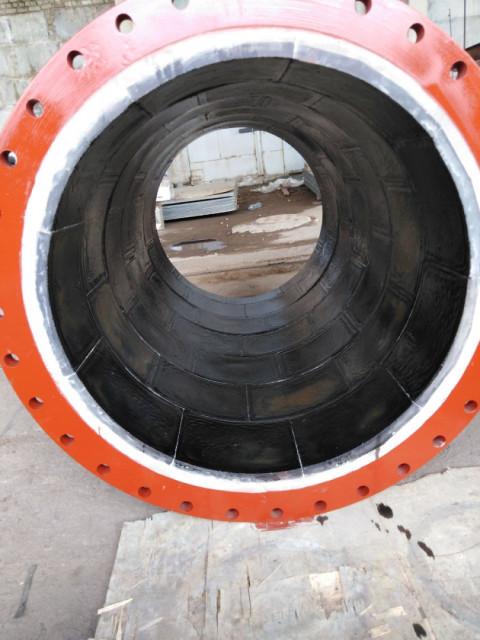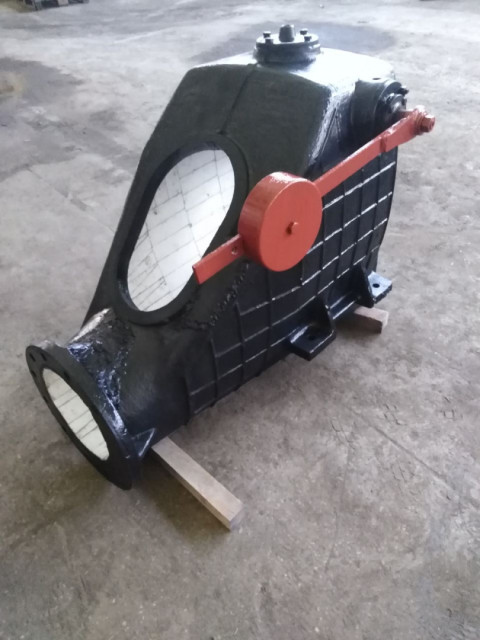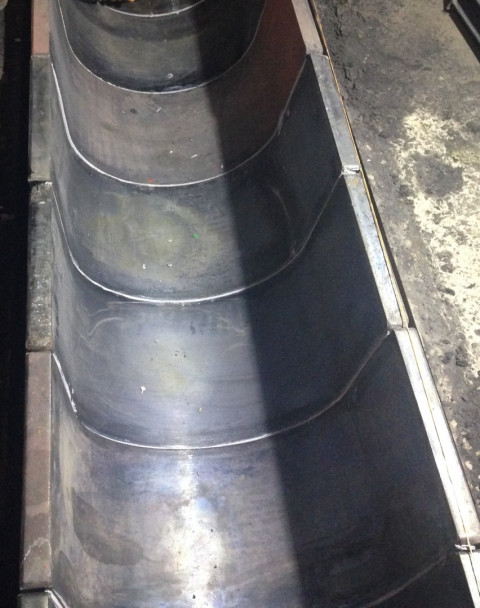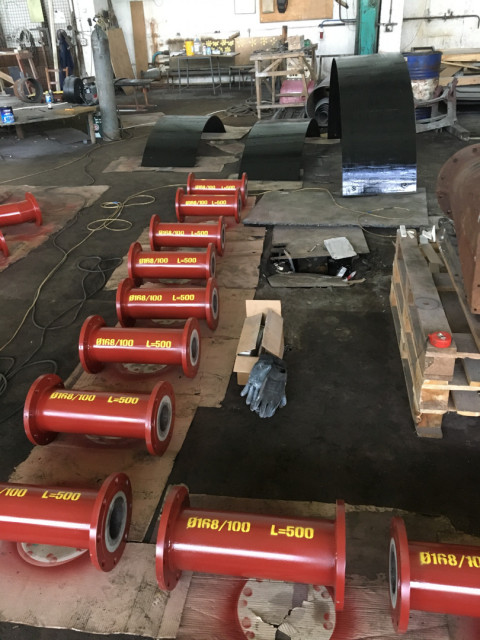Cement industry
Various types of wear can pose a risk to process equipment In the cement industry. Each type of wear poses unique challenges and requires specific strategies to effectively protect equipment. The use of appropriate wear resistant materials, coatings or lining systems can help reduce these wear risks and extend the life of equipment in a cement plant. Among the main types of wear-resistant materials that are commonly used in the cement industry to protect production equipment from wear are:
1. Overlay welding. Typically overlay welding is used in the cement industry to protect equipment that is exposed to abrasive materials such as limestone, sand and other aggregates. Examples of the use of overlay welding in the cement industry are:
- Mills. The comminution in the cement production involves crushing and grinding raw materials such as limestone and clay into a fine powder. This process is extremely abrasive and can cause significant wear to mill components. Bimetal can be used to protect mill components such as grinding rollers and grinding table from wear and tear.
- Kiln components. The kiln is an important component in the production of cement, where raw materials are heated to high temperatures to produce clinker. Individual parts of the kiln, such as the inlet chamber, burner tube and furnace tire, are exposed to high temperatures and abrasion. Overlay welding can be used to protect these components from wear and extend their service life.
- Conveyor systems. Conveyor systems are used to transport raw materials and finished products throughout the cement production process. Conveyor components such as the conveyor belt and rollers are exposed to abrasive materials and can wear out quickly. Overlay welding can be used to protect these components from wear and increase their service life.
- Fans. Fans are used in cement plants to move air and gas through the system. The high speeds and abrasive nature of the particles in the air and gas stream can cause wear and damage to the fan blades and casing. Bimetal lining can be used to effectively protect against wear and extend the life of fan blades and housing.
- Cyclones. Cyclones are used to separate fine particles from exhaust gases during the cement production process. Cyclone components such as the inner lining and inlet cone are exposed to high velocities and abrasive particles. To protect these components from wear, it is advisable to use a bimetal.
2. Cast basalt. Cast basalt is another technology used in the cement industry to protect equipment by applying cast basalt liners to surfaces exposed to abrasive and corrosive materials. Cast basalt liners can be used in cement plants to protect equipment from wear and tear, increasing equipment durability and reducing downtime for maintenance and repairs. Here are some examples of areas where cast basalt lining can be used in a cement plant:
- Raw materials processing area. Cement plants typically process large quantities of raw materials such as limestone, clay and sand. These materials can be very abrasive and cause wear and damage to equipment. Cast basalt lining can be used in bins, chutes and conveyors to protect against wear and increase equipment life.
- Kilns. Kilns are used in cement plants to heat raw materials to high temperatures, which causes chemical reactions to form clinker. High temperatures and the abrasive nature of clinker can cause wear and damage to the kiln walls. Cast basalt lining can be used to protect against wear and extend the life of the furnace walls.
- Cyclones. Cyclones are used in cement plants to separate dust and other particles from the gas stream. The high velocity and abrasive nature of the particles can cause wear and damage to the walls of the cyclone. Cast basalt lining can be used to protect against wear and extend the life of the cyclone walls.
- Silos. Cement plants often use silos to store and transport finished products. The abrasive nature of cement powder can cause wear and damage to the silo walls. Cast basalt lining can be used to protect against wear and extend the life of the silo walls.
3. High-alumina ceramics. Known for its exceptional wear resistance, high-alumina ceramics are widely used in the cement industry to protect equipment from abrasion and impact. High-alumina ceramics provide excellent resistance to abrasive materials and can significantly extend the life of the protected equipment. Here are just a few examples of cement plant equipment and components that can be effectively protected with high-alumina ceramics:
- Trays and hoppers. Trays and hoppers at cement plants are used to process abrasive materials such as limestone, clay and clinker. High-alumina ceramics can be used as a lining for chutes and bins to protect them from the erosive and abrasive effects of materials, extending their service life.
- Cyclones and separators. Cyclones and separators are essential components in cement plants for separating fine particles from gases or materials. High-alumina ceramics can be used to line the interior of cyclones and separators, providing excellent wear resistance to abrasive particles, increasing efficiency and extending equipment life.
- Mill equipment. Mills, including ball mills and vertical roller mills, are commonly used in the cement industry to grind raw materials and clinker. High-alumina ceramics can be used as wear-resistant linings inside mills, protecting them from the abrasive effects of the processed materials and reducing maintenance and downtime.
- Kiln components. Cement kilns operate at high temperatures and are subject to chemical reactions and abrasive materials. High-alumina ceramics can be used as a refractory lining in furnace components such as the furnace inlet, riser and tertiary air duct. This material provides excellent thermal insulation and chemical and erosion resistance, extending the life of the furnace components.
- Wear plates and liners. Various cement plant equipment such as crushers, conveyors and bucket elevators can benefit from the use of high-alumina ceramics as wear plates and liners. These components are subjected to constant wear and tear, and the use of high-alumina ceramics helps protect them from abrasion and extend their life.
All these technologies are valued for their ability to improve the wear resistance and durability of process equipment in the cement industry. The choice of material or combination of materials depends on factors such as the specific application, type of wear, operating conditions and cost effectiveness. It is important to carefully evaluate requirements and consult with WEARTECH SP to determine the most appropriate wear material for each application to protect equipment.
WEARTECH SP experts, based on the audit and analysis of the process of a particular enterprise, can develop highly effective individual solutions and designs to optimize the protection of various equipment and components from wear using one of the above materials or a combination of them throughout the entire production process.




